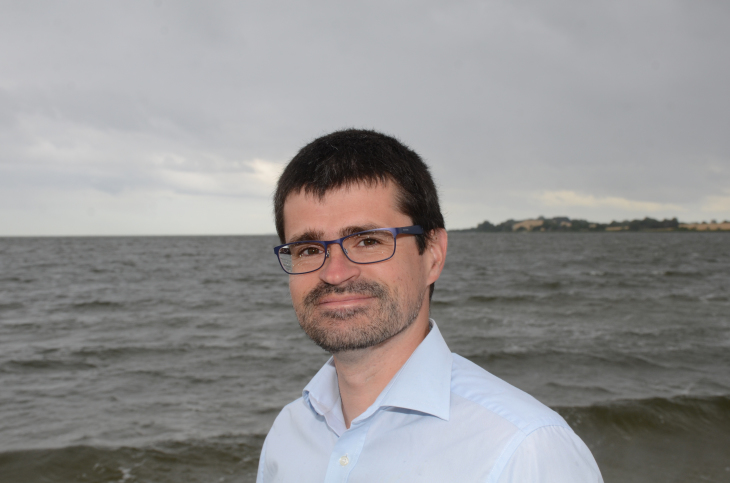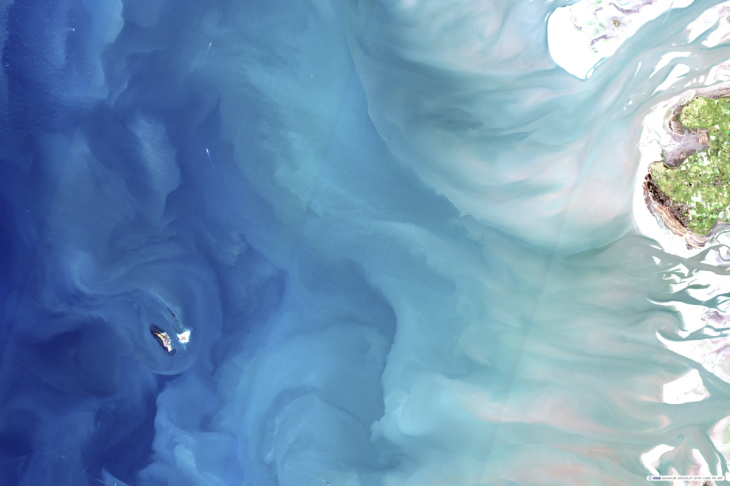Little dust bunnies in the ocean
Can lead to big changes: Scientists at the Institute for Coastal Research are studying the seabed and seawater in coastal areas of the North Sea.

With the bucket grab, sediment is taken from the seabed on board. In the foreground: two sediment samples. [Photo: HZG/Christian Schmid]
The North Sea is constantly churned up by wind and tides. As a result, many smaller and larger grains of sand, silt particles and organic residues of algae and microorganisms drift around in North Sea waters. The fine particles and the nutrients have large, charged surfaces, which cause them to stick together like dust bunnies. These combinations of mineral and organic material float with the ocean current as flakes.
Short film from the seabed of the North Sea. Recorded with the video sled.©HZG
In the transitional zone between the open North Sea and shallower coastal waters, special flakes are created which are stable enough not to be pulverised by the turbulent water and which, due to the mineral granules that they contain, are also heavy enough to sink to the bottom.

Dr. Andreas Neumann [Foto: privat]
The researchers expect that in future the Wadden Sea will be reshaped, partiuclarly through rising sea levels as a result of climate change. Dr Andreas Neumann, geoscientist at the Helmholtz Center Geesthacht (HZG), Institute of Coastal Research, Aquatic Nutrient Cycles Department, in a recent study investigated to what extent these flakes capture the biomass produced by algae, plants and bacteria and thus change local sediment composition in the German Bight. Particular attention was paid to a zone approximately 10 to 15 meters deep.
For this purpose, he and his colleagues collected sediment samples and water samples at numerous measuring points in the North Sea.
Using the measured markers such as chlorophyll, salts or granite granules, they were able to show that the sinking flakes actually change the sediment at a depth of ten to fifteen meters. In this area, the sediment is less permeable and showed a higher mud and chlorophyll content. Due to the accumulation of settled organic substances, the specific respiration rate was higher, i.e. more CO2 was produced by the microorganisms in the sediment.

Satellitenbild der Nordsee. Zu erkennen ist der Eintrag von Sedimenten und eine Algenblüte. [Foto: HZG]
The volume and composition of the flakes are the result of a complex interplay of many environmental parameters such as the availability of nutrients and mineral particles, or the turbulence in the water. In addition to climate change and tide, they are also characterised by human intervention such as dyke construction, dredging or nutrient inputs from the estuary rivers. The totality of the many influences determines the reaction of the very dynamic Wadden Sea and its ability to retain grains of sand and nutrients on the coast.
Dr. Andreas Neumann: "We coastal researchers still have to clarify whether the Wadden Sea can import enough sediment from the North Sea to keep up with the rise in sea levels. Otherwise, habitats in the mud flats may disappear and the ecosystem of the Wadden Sea will change fundamentally. We will certainly continue our research there to discover how the sediment in the mud flats is changing.“
Further information: Plankton in the Tidal Current a Highlight Topic of the Institute for Coastal Research
The publication:
Contact:
Department Aquatic Nutrient Cycles
Phone: Tel: +49 (0)4152 87-1880
E-mail contactHelmholtz-Zentrum Geesthacht
